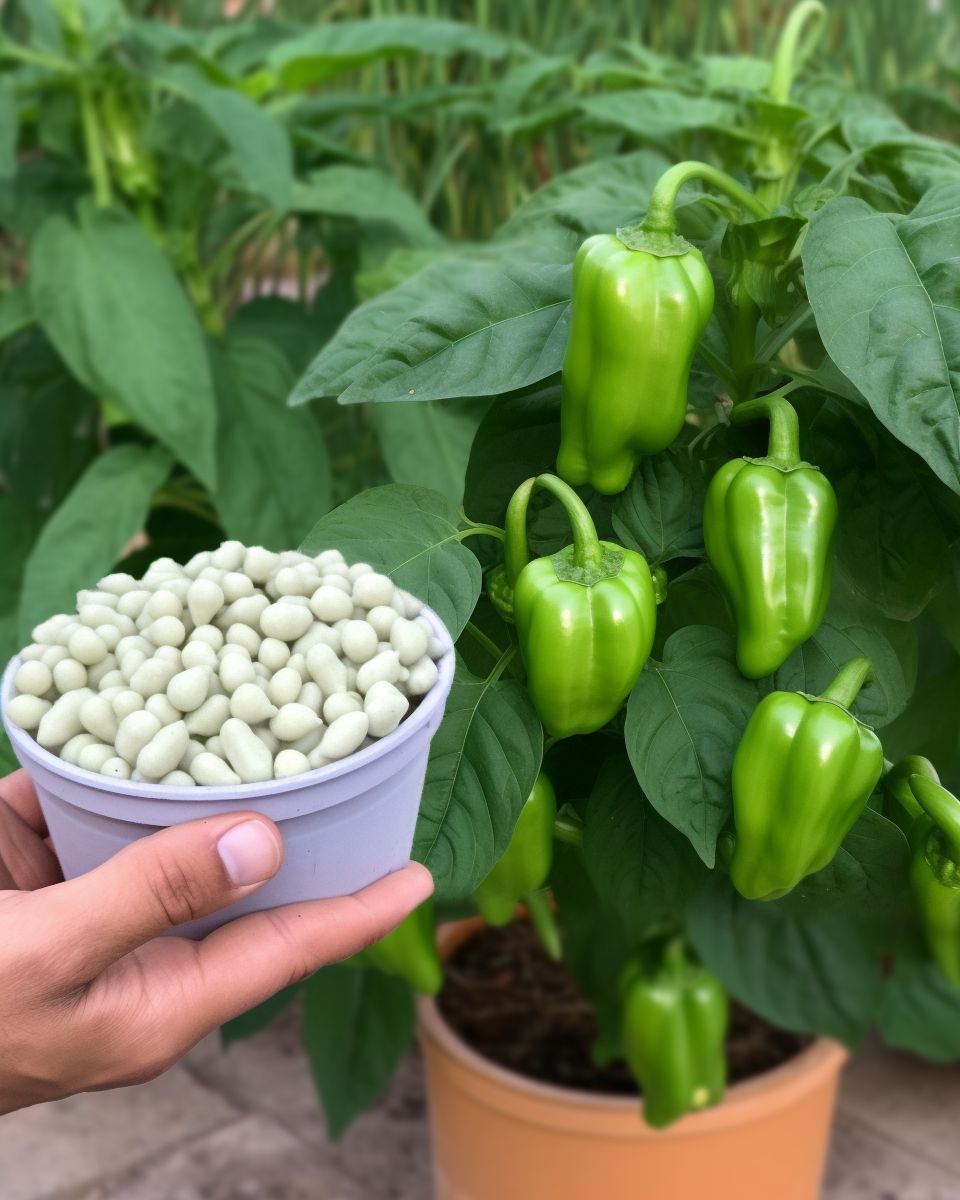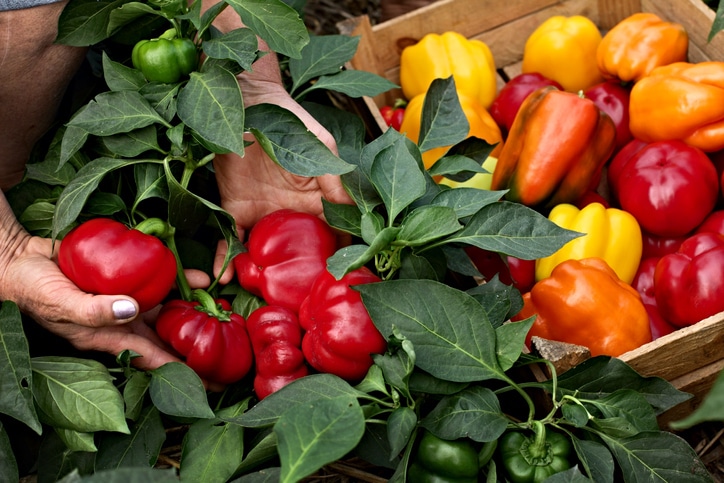
Cultivating a thriving garden is not just a hobby but a source of pride and nourishment. Bell peppers, with their vibrant colors and sweet flavors, are a favorite addition to homegrown produce.
In this guide, we’ll uncover the best-kept secrets for growing the most flavorful and bountiful bell peppers right in your own backyard.
Choose the Right Variety:
Select bell pepper varieties suited to your climate and growing conditions. Opt for disease-resistant varieties and consider factors like size, color, and flavor preferences when choosing seeds or seedlings.
Provide Adequate Sunlight:
Bell peppers thrive in full sunlight, so choose a sunny location in your garden with at least 6-8 hours of direct sunlight per day. Ensure that your pepper plants receive ample light to promote healthy growth and fruit production.

Prepare Rich, Well-Draining Soil:
Bell peppers prefer well-draining soil rich in organic matter. Amend your garden soil with compost or aged manure to improve fertility and soil structure. Ensure proper drainage to prevent waterlogging, which can lead to root rot and other issues.
Plant at the Right Time:
Plant bell pepper seedlings or seeds outdoors after the danger of frost has passed and soil temperatures have warmed to around 60°F (15°C). Plant peppers in rows or raised beds, spacing them 18-24 inches apart to allow for proper airflow and growth.
Provide Adequate Watering:
Keep bell pepper plants evenly moist but not waterlogged. Water deeply once or twice a week, depending on weather conditions and soil moisture levels. Mulch around pepper plants to retain soil moisture and suppress weeds.

Support Pepper Plants:
As bell pepper plants grow, provide support with stakes or cages to prevent sprawling and ensure proper air circulation. Supporting pepper plants also helps prevent fruit from touching the ground, reducing the risk of rot and pest damage.
Fertilize Regularly:
Feed bell pepper plants with a balanced fertilizer high in phosphorus to promote flowering and fruit set. Apply fertilizer according to package instructions, and consider supplementing with organic fertilizers like compost tea or fish emulsion for added nutrients.
Prune for Optimal Growth:
Remove any suckers or side shoots that develop in the leaf axils of bell pepper plants. Pruning helps channel energy into fruit production and promotes better airflow and light penetration, reducing the risk of disease.
Watch for Pests and Diseases:
Monitor bell pepper plants regularly for signs of pests such as aphids, whiteflies, or hornworms, and take appropriate measures to control infestations. Keep an eye out for common diseases like blossom end rot and fungal infections, and address them promptly to prevent spread.
Harvest at the Right Time:
Harvest bell peppers when they reach their mature color, whether green, red, yellow, or orange, depending on the variety. Use sharp scissors or pruners to cut peppers from the plant, leaving a short stem attached.
By implementing these best-kept secrets for growing bell peppers, you can enjoy a bountiful harvest of flavorful and vibrant peppers that will elevate your culinary creations. From selecting the right varieties to providing proper care and maintenance, nurturing bell pepper plants is a rewarding experience that yields delicious rewards.
As women who appreciate the joys of gardening and the satisfaction of growing our own food, mastering the art of growing bell peppers is a testament to our dedication and passion for nurturing nature’s bounty. With these insider tips and tricks, you can cultivate the best bell peppers around the block and savor the fruits of your labor all season long.
Here’s to thriving gardens, abundant harvests, and the joy of growing the best bell peppers with love and care!
Happy gardening!

